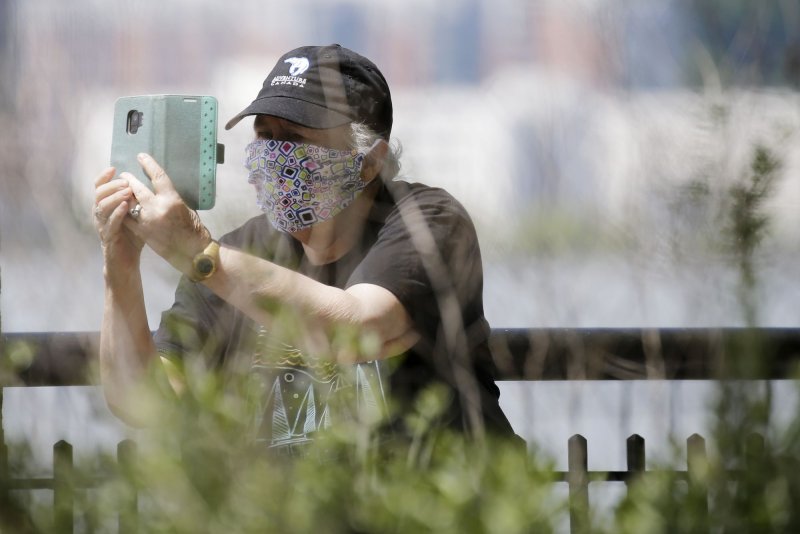By HealthDay News

A woman takes a photo while wearing a protective face mask on a sidewalk on the Upper West Side of Manhattan New York City in May. Photo by John Angelillo/UPI | License Photo
Does your income determine your ability to practice social distancing?
New research suggests that's so: Richer communities have been more likely to stay home during the pandemic than poorer ones, according to scientists from the University of California, Davis.
For the study, they used data from mobile location devices between January and April 2020 and found that social distancing varied by income.
During the lockdown, those in the richest communities stayed completely home by about 25 percentage points more than usual, compared with 10 percentage points in the poorest communities.
"We found that before the pandemic, individuals in the wealthiest neighborhoods tended to be the least likely to stay completely at home on a given day," researcher Joakim Weill said in a university news release. He's a graduate student in the department of agricultural and resource economics.
"But when the states of emergency came into play, individuals living in the wealthiest areas stayed home the most. It was a complete reversal," Weill noted.
The study couldn't show the causes for this reversal. But poorer communities may have more essential workers who can't work from home, the researchers said.

A woman takes a photo while wearing a protective face mask on a sidewalk on the Upper West Side of Manhattan New York City in May. Photo by John Angelillo/UPI | License Photo
Does your income determine your ability to practice social distancing?
New research suggests that's so: Richer communities have been more likely to stay home during the pandemic than poorer ones, according to scientists from the University of California, Davis.
For the study, they used data from mobile location devices between January and April 2020 and found that social distancing varied by income.
During the lockdown, those in the richest communities stayed completely home by about 25 percentage points more than usual, compared with 10 percentage points in the poorest communities.
"We found that before the pandemic, individuals in the wealthiest neighborhoods tended to be the least likely to stay completely at home on a given day," researcher Joakim Weill said in a university news release. He's a graduate student in the department of agricultural and resource economics.
"But when the states of emergency came into play, individuals living in the wealthiest areas stayed home the most. It was a complete reversal," Weill noted.
The study couldn't show the causes for this reversal. But poorer communities may have more essential workers who can't work from home, the researchers said.
The study also showed that the pandemic disproportionately affected poorer communities, which have more people with preexisting conditions and less access to health care.
"As policymakers are thinking about emergency relief packages, this points to the need for lower-income regions to be an area of focus in order to build capacity for social distancing and other measures critical to reduce the spread of this disease," said researcher Michael Springborn, an environmental economist and associate professor in the department of environmental science and policy.
"This is just one piece of a broader set of emerging results showing that lower-income neighborhoods are particularly vulnerable as the pandemic proceeds," he said in the release.
The report was published recently in the Proceedings of the National Academy of Sciences.
No comments:
Post a Comment